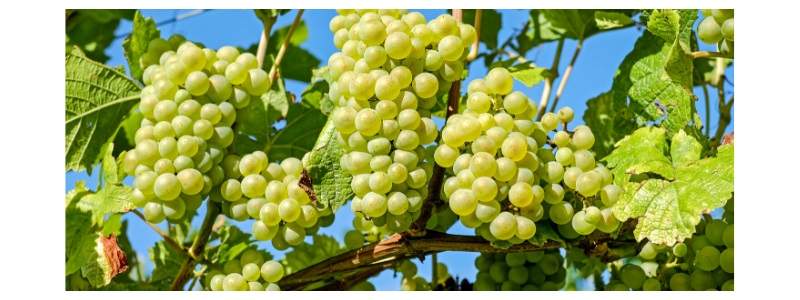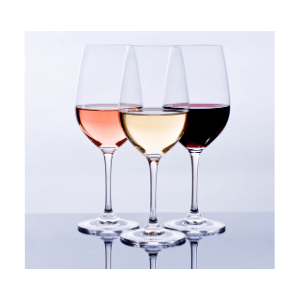No products in the basket.

This Wines With Attitude guide covers everything you need to know about acidity in wine – how you taste acidity in wine, what causes it, which wines have high acidity and which are low in acidity, whether high or low acidity is better plus tips on matching high acid wines with food.
Wine writers use the word “acidity” frequently – I know that I write the term often in my Wines With Attitude tasting notes. Conscious that some consumers may be wary of the words “acidity” or “acidic”, I try to vary the words I use to describe wines displaying acidity so you will see terms such as fresh, bright, zesty, zingy, refreshing, tangy and crisp though whether these really convey the true meaning could be debated.
It is simply difficult if not impossible to avoid using “acidity” because it is one of the essential components of a good wine. So, if we can’t avoid the term, let’s find out more about it.
Hot tip: Tannins and acidity in particular can clash so avoid wines with high levels of both

Acidity is naturally present in grapes as it is in many foods and different varieties have different natural levels of acidity – Nebbiolo and Sauvignon Blanc for example are at the high end of the scale and Grenache and Viognier are at the low end.
The level of acidity is also affected in the vineyard by soils, location and the weather or vintage. The level of acidity in grapes first increases but then declines as the grapes ripen on the vine and the level of sugar rises.
Winemakers might be tempted to adjust the acid (or the sugar- or both) and are generally permitted to do so within the boundaries of local regulations. Acidification, generally by the addition of tartaric acid, the most dominant acid in grapes, can be undertaken to increase acidity in warmer climate areas but can result in poorly made wine, especially where the adjustments are made post fermentation where the added acid has less chance to blend with the wine. A good taster can often recognise poor acidification as there is a very artificial acidic taste to the wine.

Acidity is usually naturally lowered by malo-lactic fermentation or secondary fermentation, a process often encouraged by winemakers as it softens the acidity, converting malic acid into lactic acid and carbon dioxide. Deacidification may also be permitted by adding a carbonate – and though acid levels are reduced this can leave calcium tartrate crystals in the wine. These crystals are harmless but can deter some consumers from buying or drinking a wine.
One type of acidity in wine that is not desirable is volatile acidity, essentially acetic acid or vinegar. A small amount is produced during fermentation but it increases in a wine exposed to air and in large quantities spoils the wine.
Hot Tip: If you smell vinegar or nail polish remover in a wine, send it back
I could get scientific and talk about measuring total acidity and pH levels in wine but I’ll keep it short and just say that wines generally have a pH between 3.3 and 3.7 which sits in between black coffee with a pH of 5.0 and orange juice with a pH of 3.0. Few wines therefore are more acidic than a glass of your morning orange juice. But which wines should you opt for if you prefer to avoid wines with high acidity – here are a few tips:
Hot tip: White wines tend to have higher acidity than red wines
Almost all red wines undergo malo-lactic fermentation to convert harsh malic acid to softer lactic acid but not all white wines do; for example producers tend not to use MLF for Sauvignon Blanc but for producers of white Burgundy it is essential for the style. Lighter style red wines tend to have higher acidity than heavier, more full-bodied reds.
As mentioned above as grapes ripen the level of acidity in them increases but then declines as the level of sugar rises. In cool climate areas such as Burgundy vines can struggle to ripen fully so grapes generally have higher acidity and lower sugar. Conversely grapes grown in warmer climates tend to have low acid and high sugar.
Hot tip: Cool climate wines tend to have higher acidity than wines from warmer regions


In general wines that are higher in acidity complement food better than those with low acidity. Wines that display high acidity particularly complement acidic foods such as lemon or vinegar-based sauces as crisp refreshing wines make the food seem softer and less tart. So for seafood with freshly-squeezed lemon or asparagus served with a vinaigrette sauce, try an Albariño or a Provence rosé.
Hot tip: If presented with a dish that is more acidic than the wine, add a dash of salt to reduce the acidity of the food
Generally acidic wines will not go well with creamy sauces so for meat served with a creamy sauce, a rich fish pie or Eggs Benedict, a Chardonnay, Sémillon or Chenin Blanc will be a better match.
Hot tip: If you are served a creamy dish with an acidic wine such as Sauvignon Blanc, add some lemon juice or balsamic sauce to the food so that the food and wine are a better match.
© 2014-2025 Wines with Attitude Ltd | VAT Reg. No. 181 2419 22 | Registered in England 08918466 | Fiveways, 57-59 Hatfield Road, Potters Bar, Herts, EN6 1HS